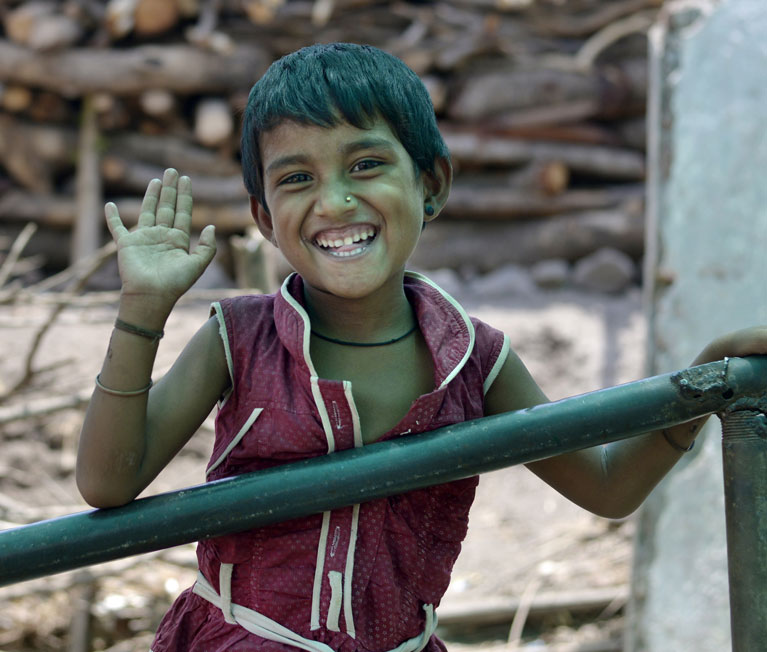Case Study
TYCIA Foundation | Opening the Door to Discoverability
The background
Saraswati, all of a precocious 7, belongs to the Korku tribe living in Khandwa, Madhya Pradesh. Traditionally hunter-gatherers, the community has also built a name for itself as excellent agriculturists. Most Korkus today are farmers. Their farming traditions include a legacy of pioneering the cultivation of potato and coffee in Madhya Pradesh. Though they have traditionally worked towards conservation and fighting malnutrition through sustainable practices, today, many Korkus struggle to make a living. Saraswati's four-month-old brother died of malnutrition.
It was then that she decided that she would become a doctor and save lives. For her, the government school she studied at was a gateway to a better future. Not just for her, but for her entire community. But, things changed when her family's financial situation got worse. Both her parents had to go out and find work. And tiny Saraswati had to stay home and take care of her younger siblings. Her dreams of being a saviour in a white coat would have died, if not for the TYCIA Foundation's 1000andyou project. The campaign aims to help 1,000 Korku girls in Khandwa go to school. A sum of ₹3,000 can see one girl through one academic year of schooling.
ForThe tabbreviation TYCIA unfolds into Turn Your Concern Into Action.
.............
Sukoon is a non-profit organisation that works with communities affected by climate change. It focuses on protecting the environment, using self-help groups to build a climate resilient ecosystem. The organisation also helps these communities sustain their livelihoods by supporting them with training, new market opportunities, healthcare, education opportunities and support, and more. Sustainable climate action is not possible without the active involvement and participation of the most affected communities. Climate change often perpetrates a vicious cycle of poverty and desperation. It is difficult for rural communities to stay focused on sustainable paths. Their livelihood, their very lives even, are at stake.
And this socio-economic imbalance is something Sukoon addresses, alongside climate action initiatives. Founded in 2014, the nonprofit works in villages in six districts of West Bengal. These villages have seen decades of natural calamities. Survival is second nature to them. They innately understand the need to sustain their local environments. Sustainability is not a new concept to them. However, having to deal with the pressures of manmade change has eroded their will. Sukoon brings them a ray of hope. In terms of helping them actively build their lives while protecting the environment.
Over the years, the organisation has helped over 50,000 households. They did this by empowering 10,000 self-help groups. Each self-help group works with a volunteer, who understands its objectives and needs. Over the years, Sukoon has been sustained by a few well-meaning donors. Mostly friends and family of founders. Both donations and volunteers came through word-of-mouth referrals. As the organisation started growing in scale, these efforts were not enough. It had to mobilise both volunteers and money, in a sustained manner. And this had to come in without the team putting a whole lot more time and energy into it.
Like most organisations in the impact sector, Sukoon was more focused on the work it was doing on the ground. The nonprofit did not have the resources to dedicate to building discoverability. The founders of Sukoon believed that the work they did should speak for itself. Donations often came from the founders' networks of friends and family. Volunteers too came to the organisation in the same manner.
As the organisation grew, so did the number of people and communities it was helping. And so did its needs. It was no longer enough that volunteers and money trickled in whenever. There was a sustained need for these resources. The team had to start dedicating a large part of their time to finding these resources. And this was not a sustainable option. Nor was it in the interests of the organisation.
The challenge here was a simple one. Of discoverability. Unless people knew that Sukoon existed and understood the work it did, they would not be able to decide how to contribute to it. The organisation had no website. It had a cursory presence on social media, intermittently driven by the founders' sporadic posts. For Sukoon to be present and found on the internet, they had to start from the basics. The organisation needed a website.
They started looking for help to build a website, keeping costs low. And while doing the research for this, someone guided them to the aikyam fellows forum. One of the founders left a post there, asking for help to build a website. And the aikyam fellows team reached out to them. Right at the outset, the team posed a few questions to Sukoon.
-
Whois(are) the primary audience(s) for this website? What are the actions that you want people to take on the website?Share references to any websites that have inspired you. In terms of design/writing/user friendliness/navigation
These questions helped the Sukoon team distil their thought process around building the website. This clarity would help create the website that would accurately represent Sukoon to its audience. Sukoon had clarity that it was primarily looking to raise two resources through the website: volunteers and donations. Here are some of the steps taken in the making of this website.
The content and the design for the website was created keeping Sukoon's objective in mind.The information that volunteers and donors would look for was given prime importance.For volunteers, this included information onSukoon's programmes/initiativesthe impact created by these programmeshow they can contributewhere to sign upwhom to contact for more informationFor donors, this included information onprogrammeswhat their money will be used forhow to donate, which included tax benefits and other infoCall-to-action buttons on the home page indicated where one could volunteer and/or donate.

